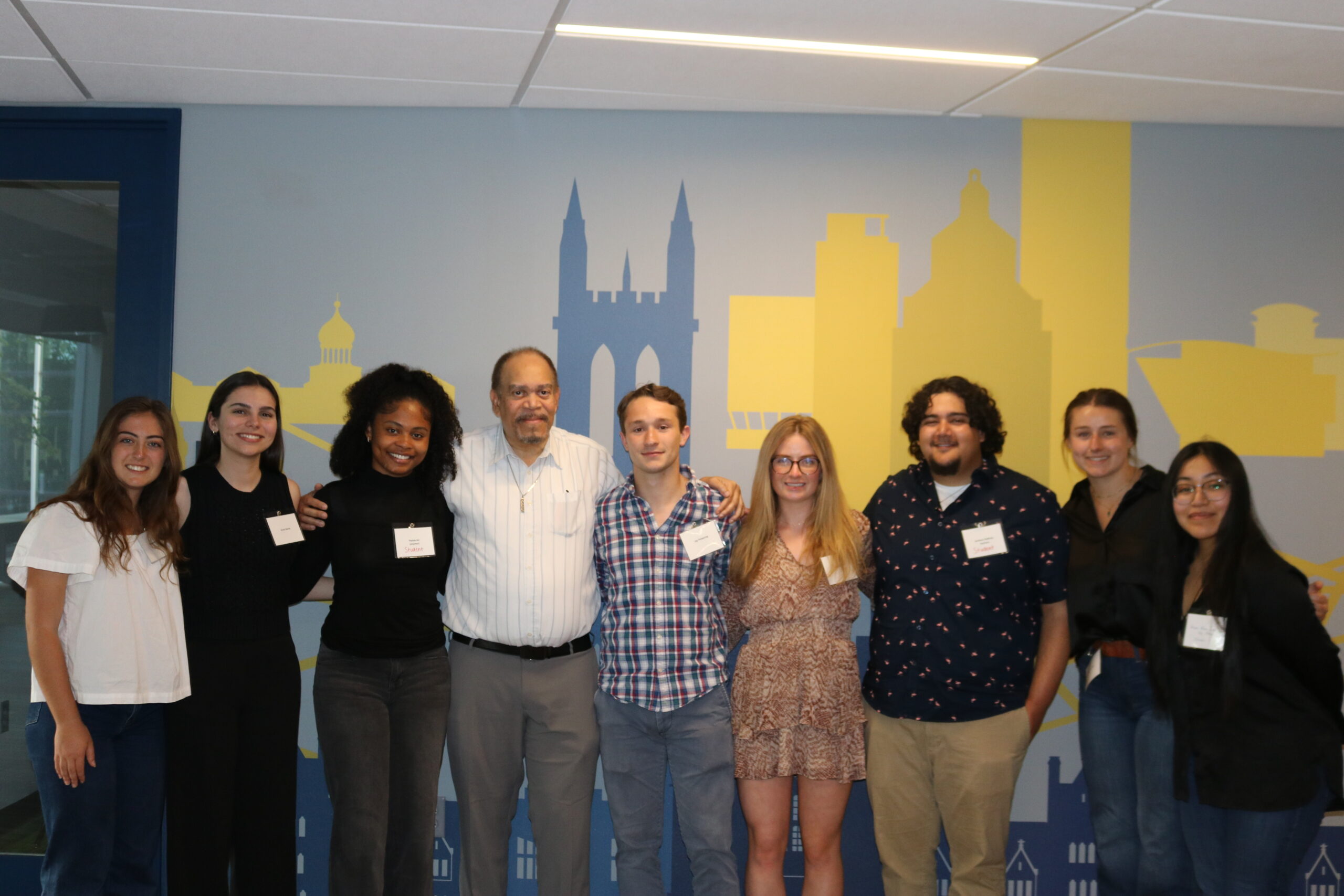For thirty years, Connecticut’s suburbs shipped roughly 600,000 tons of trash every year to an incinerator in Hartford’s South End neighborhood. How did this regional waste management practice impact the lives of local residents? In early 2025, I was given the opportunity to investigate this question as one of nine student researchers on the Liberal Arts Action Lab’s Hartford Environmental Justice Project. As an Environmental Science major and Legal Studies minor, I have always been interested in urban environmentalism, specifically how inclusive urban renewal strategies can benefit environmental justice communities. Joining this project offered an opportunity to get involved with local environmental advocacy in partnership with communities in Hartford, even inspiring my senior honors thesis. Our research revealed the mark that waste management issues have left on the city and emphasized the need for further remediation projects.
The semester-long Liberal Arts Action Lab project was particularly exciting because it launched the three-year Urban Environmental Justice in Greater Hartford grant funded by the Andrew W. Mellon Foundation, a collaboration between Trinity College’s Center for Hartford Engagement & Research, Center for Caribbean Studies, and Center for Urban and Global Studies, with community partners at the Center for Leadership & Justice and the Stowe Center for Literary Activism.
In the Action Lab project, students and faculty from Trinity and CT State Community College partnered with the Center for Leadership and Justice (CLJ) to understand how residents in Hartford’s South End, a predominantly low-income community of color, were impacted by the waste incinerator. In collaboration with CLJ, our research aimed to center Hartford residents’ voices specifically by highlighting their recommendations and calls for change.

Our time in the Action Lab was split between two classes: a Research Methods course and a Research Project course, co-instructed by Trinity professors Dr. Derin Atalay, Dr. Abigail Fisher Williamson, and Sarah McCoy, a community organizer with the CLJ. In the Research Methods course, we learned about the difference between qualitative and quantitative research, what methods would best suit our project, and how to use data processing tools to gather and analyze our findings. In the Research Project course, we discussed environmental justice readings and case studies, collected and processed our data, and created a website that displayed our results, recommendations, and conclusions.
To prepare for data collection, our project first began with a literature analysis, organization, and training. Our data collection then involved a multi-step approach to amplify the voices of those impacted by the waste incinerator. We used oral history interviews and PhotoVoice, two types of Participatory Action Research (PAR) methods that emphasize collaboration, equity, and accountability, and allow research participants to work as co-researchers on the project.
We conducted five oral history interviews with a diverse group of current and former South End residents who were directly affected by the trash incinerator. Our questions focused on their experiences with environmental justice in Hartford, waste management, and incinerator-related health issues. In the PhotoVoice activity, seven participants were invited to take five or more photos that captured how waste management issues manifested in their communities. After two weeks, the participants shared their photos in a group discussion facilitated by the Stowe Center for Literary Activism. During this conversation, the participants reflected on the compiled photos, discussed experiences with waste-related challenges across Hartford, and shared ideas and hopes for future remediation.
After transcribing the recordings of our oral history interviews and PhotoVoice discussion, we used the Atlas.ti coding platform to analyze our data and identify common themes. We found that the waste incinerator contributed to significant mental and physical health challenges and perpetuated unequal waste management responsibilities in Hartford and its surrounding suburbs. Throughout our analysis, participants endorsed CLJ’s proposal to establish an environmental justice fund that would directly benefit the city of Hartford while relieving impacted communities of the burden of waste management. A more detailed explanation of our findings can be found on our website.

At the end of the semester, we presented the final website to share our findings with community partners and members of the public. This experience led to one of the most memorable and moving moments of the project: meeting Dr. Mark Mitchell, a trailblazer in environmental justice and public health advocacy in Hartford. Dr. Mitchell’s article, “Racism as a Motivator for Climate Justice,” was one of our key sources throughout our research process. During our conversation, Dr. Mitchell shared his deep knowledge of the history of Hartford’s environmental justice struggles and emphasized how our project supports the implementation of equitable solutions in the South End neighborhood.
A few months later, I was invited to present our findings to CLJ’s Board of Directors. In that presentation, I highlighted our recommendations for using an environmental justice fund to support remediation projects in Hartford and discussed our project with a group of community leaders and advocates. I was also inspired to learn about CLJ’s ongoing advocacy projects and their long-term commitment to justice in the city.
Working as a student researcher in the Action Lab was incredibly meaningful. In fact, it even directly influenced my senior honors thesis proposal. For the last three years, I have worked as an undergraduate research assistant, studying how mercury concentrations impact urban ponds in Hartford. After learning about the long-term emissions from the waste incinerator, I began to hypothesize about how the incinerator may have contributed to heavy metal concentrations in Hartford’s urban ponds. In my senior thesis, I will investigate mercury concentrations, a crucial step towards raising awareness of the harmful effects of incinerator emissions on environmental justice communities and supporting advocacy to address impacts on Hartford residents.
